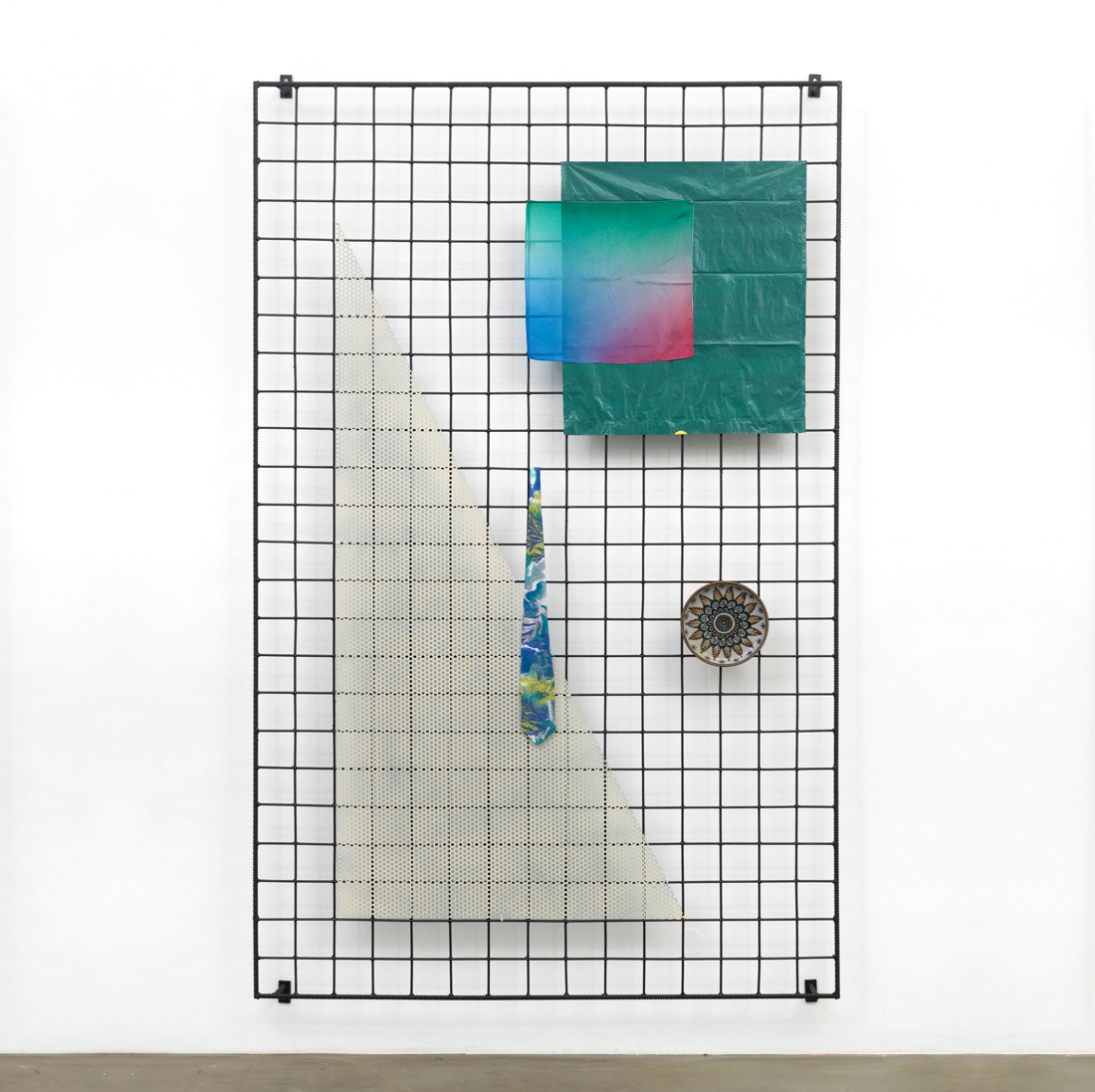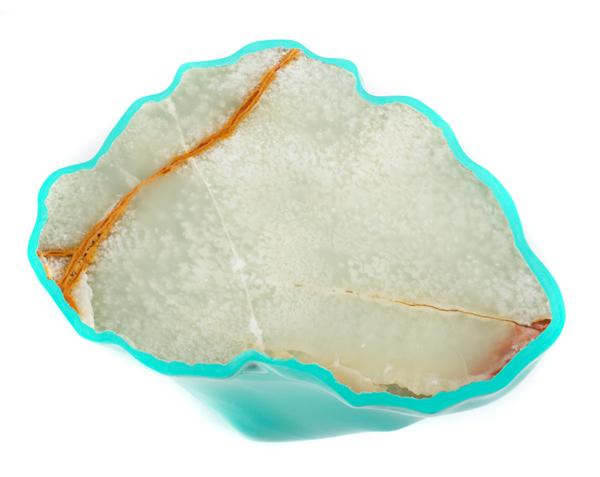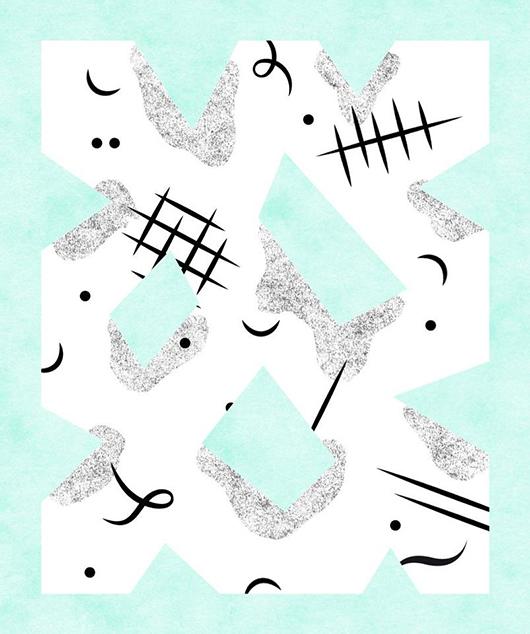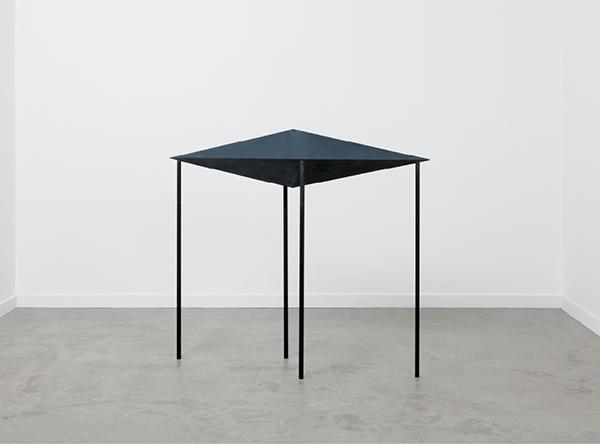
09.06.13
Excerpt: Exhibition
Jonathan Muecke for Volume Gallery
Jonathan Muecke makes me anxious. I love his work so much, but I don’t entirely know what it means. I love his work so much, but he barely makes any of it. I love his work so much, but I don’t understand what he’s doing up there in Minneapolis, keeping mostly to himself. However I suppose it’s appropriate that he would cultivate the same cool, detached, mysterious air as his pieces, which — when I interviewed him for W magazine back in 2011, the first time he launched a collection with Volume Gallery — he described as “relational objects,” things with unfamiliar but contextual functions like “scrambling everything in a room” or “behaving like a mass — something you don’t really want to think about.”
To that end it may be equally appropriate (if not semi-amusing) that on the occasion of Muecke’s second show with Volume, opening tonight in Chicago, curators Sam Vinz and Claire Warner asked a psychiatrist rather than a writer to interview him for the catalog, who proceeded to probe him about equalizing and collapsing before concluding that “I find everything we’ve discussed completely logical, yet strange … in the true sense of something not yet encountered, or still unknown.” We’ve excerpted a few key moments from the conversation between Muecke and Dr. Brian Stonehocker here, alongside images of all six pieces from the new series; if you like what you see, waste no time heading to the gallery’s website to inquire, because you never know where or when Muecke and his intriguing repertoire will surface next. I’m getting nervous just thinking about it.
(Top image: Stabilizer, carbon fiber, 2013)
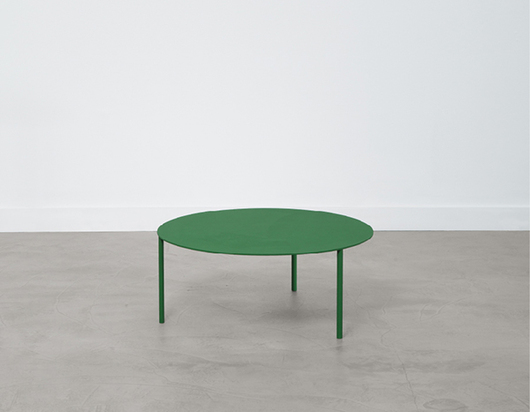 Painted Shape (PS), painted aluminum, 2013
Painted Shape (PS), painted aluminum, 2013
BS: Your work is very different in person than it appears in images. In photos the pieces superficially appear to be just simple, well-designed, minimalist objects, but you don’t get any sense of what it is actually like to interact with them.
JM: I’ve never thought of them as being minimal. I’ve always thought of them being exactly oppo- site of that, of being about maximums. They can be as generous as possible, just reductive as possible. There’s a lot of effort involved to eliminate details, which is often one of the hardest things to do. There are certain traits that you can’t take away from objects. Every object has to have a shape, material, color, proportion, texture, process, or idea even. Objects always will have these. I can’t just eliminate one and get away with it. For me it wasn’t about combining these things. It was more about collapsing them. I know I’ve been successful when these traits be- came equalized and you can’t distinguish between them. When the shape is the color, or the scale is the material.
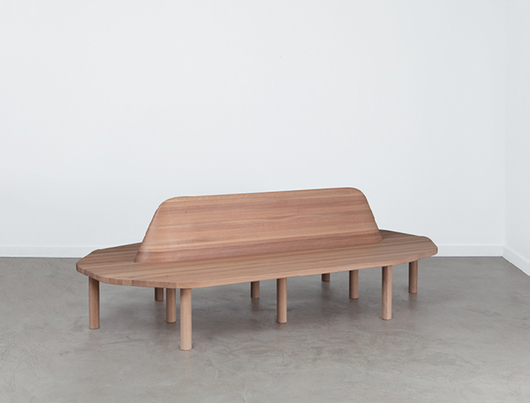 Low Wooden Shape (LWS), white oak, 2013
Low Wooden Shape (LWS), white oak, 2013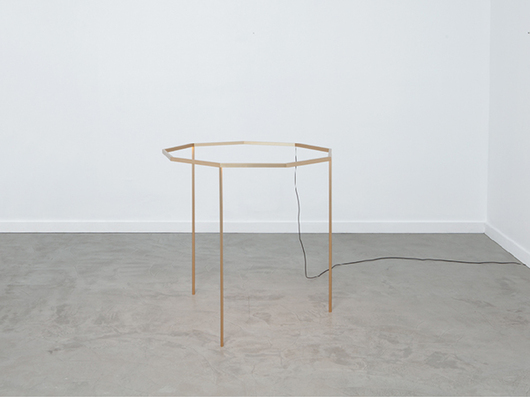 Decentralized Light (DL), aluminum and LED, 2013
Decentralized Light (DL), aluminum and LED, 2013
BS: I understand equalizing, but will have to think about collapsing. That is a foreign concept to me. Your manner of communicating reminds me of aspects of your practice. It’s precise and exacting, but also leaves considerable room for personal interpretation. Perhaps it’s time we turned to the objects. One of the pieces that caught my attention was the Decentralized Light. I get the sense that this piece is more about the quality of light than the light itself.
JM: Exactly. What I was interested in was the idea of light unattached from an object, not lighting as an object, which has been a long tradition in interior lighting. I found the best way to ac- complish this was to decentralize it. When it doesn’t have a center anymore, you can’t locate it as an object easily. So it became a perimeter, a perimeter to move around. It’s not about the object itself. It is intentionally very slim, and the gold anodizing reflects light in way that it somewhat disappears and then reappears. This project was really about finding the right scale, too big and too small at the same time, and too low and too high at the same time. Once that was resolved the project became successful.
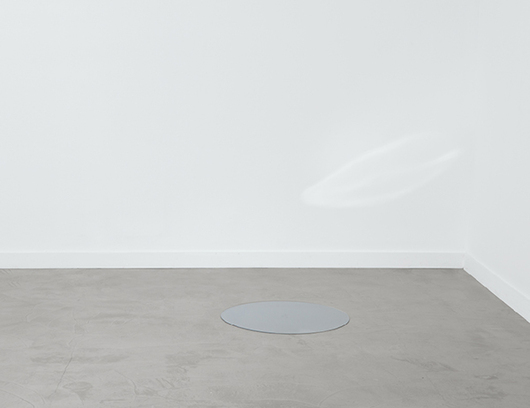 Horizontal Shape (HS), stainless steel, 2013
Horizontal Shape (HS), stainless steel, 2013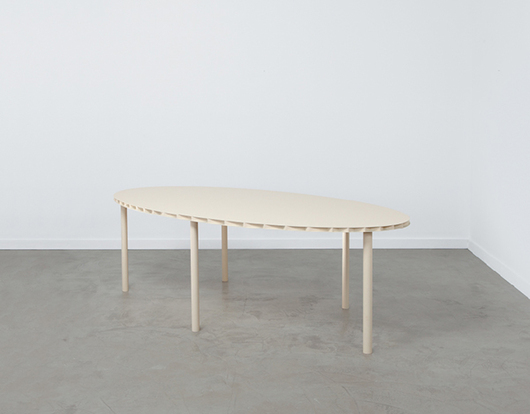 Mezzanine, aluminum, 2013
Mezzanine, aluminum, 2013
BS: What do you mean by Open Object?
JM: At Cranbrook, my classmates would always ask me what I was working on. In a way I was asking for an object you could see for the first time repeatedly. At the time the term Open Object didn’t exist. I was really describing the traits of an object. What remains after you’ve seen an object for the first time. I was tired of looking at something and being able to say to myself, “This is made out of this material, this does this specific function and so on.” There should be a way to let the unknown remain in the object. You recognize this in objects, or in moments like standing on the edge of the shore and looking into the sea. It’s about not knowing what you are looking at. It’s that, and also knowing what you are looking at. You are knowledgeable and ignorant at the same time. Take the Mezzanine. That object transcends. It is evident even in a photograph that it is constantly changing. It’s an oval, which is a regular enough shape, but there are five legs. They’re regularly spaced, but they’re not on any type of axis. The edges are shifting five times. The shape of the edges changes five times, but that shift doesn’t occur in the same shift as the leg. These shifts aren’t stacked. It has an effect on that object that in my estimation makes it universal.
BS: So in effect you are engineering qualities into the object that makes one want to move around it, experience it in different ways, and have an ongoing relationship with it; the opposite of planned obsolescence. As a collector I can relate to that. There are some pieces I’ve acquired only after years of searching, but once they are in my home they fade into the background. I stop noticing them. And there are others that I never tire of. I hadn’t understood the term Open Object, but I intuitively know what it is like to live with one. You refer to them as projects or experiments instead of objects. They are different. Perhaps that is why two pieces from your first show are already in major museum collections.
JM: The first show was just about making an Open Object. This time around, I had to consider the more challenging ones. It is quite easy to say “this is a Mass” and develop an Open Object for a typology that doesn’t exist. In this show I wanted to find the Open Object in a dominant typology. I’ve been calling that universal without knowing why. I feel they travel forwards and backwards to a greater extent.
“Jonathan Muecke: Open Objects” is on view from September 6 through November 9 at Volume Gallery, 845 Washington Blvd, Chicago, Illinois
